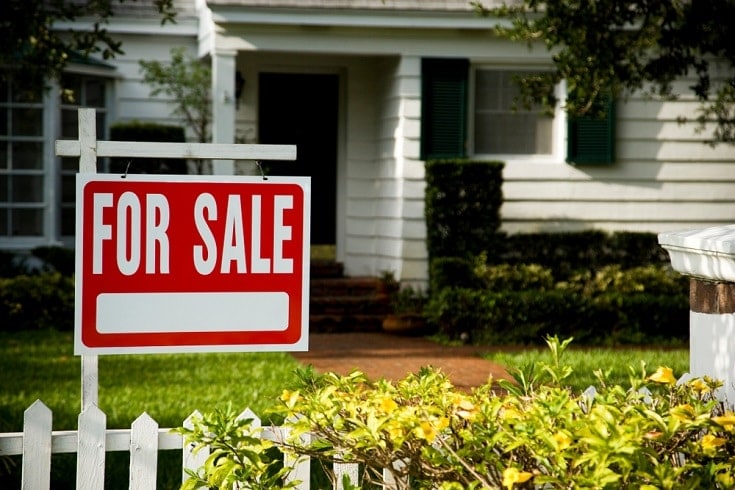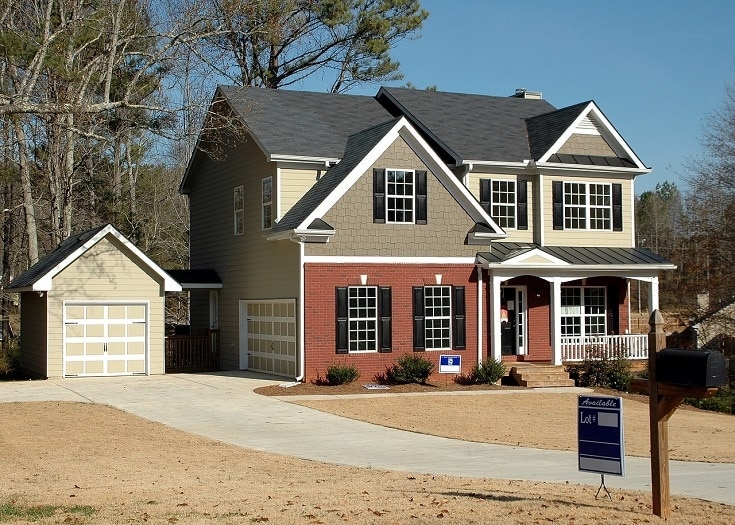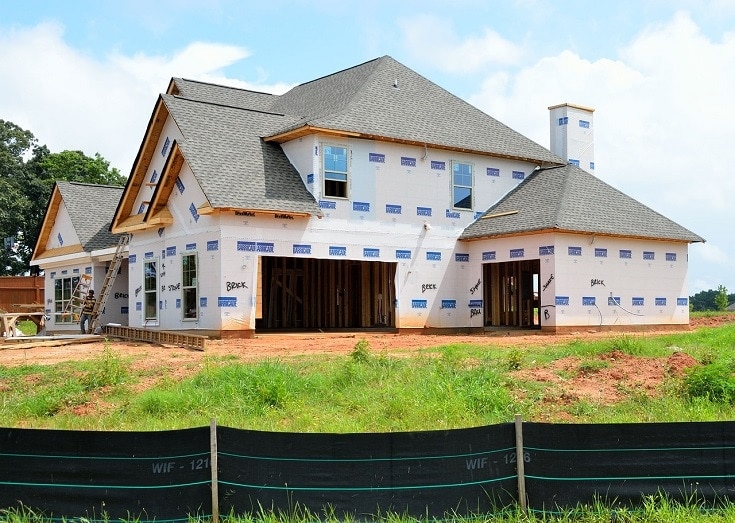Build vs Buy a House: Is It Cheaper to Build Your Own?
-
- Last updated:


Your home is one of the most important and impactful things you’ll ever own. You’ll be living there for years, and it could be fundamental to your children’s development. But there’s always been a big debate about whether it’s better to purchase a home or build your own. Naturally, there are advantages and disadvantages to each. The real question is: which path is more cost-effective?
In this article, we’re going to break down the pros and cons of buying or building your home. We’ll discuss hidden costs that you might not have considered, time constraints, extra hurdles that might be in the way, and more. Hopefully, by the end, you’ll be better equipped with the knowledge you need to determine if buying or building is a better choice for you.

Building a House:

If you already have a clear idea of everything you want from your home, then building a house is a great way to ensure that your new home is everything you hoped for. The National Association of Home Builders, NAHB, says that in 2019, the average cost to build a home came up to $114 per square foot. That seems pretty simple upfront, but there are some hidden costs associated with building yourself, as well as loads of additional work that needs to be completed. On the other hand, there are some serious advantages to building a new home as well.
You Get Everything You Want
The most obvious benefit of building yourself is that you get exactly what you want from your new home. You won’t have to pay for design decisions that someone else made, but you don’t particularly care for. Sometimes, there are features on a home that raise the price, even if you don’t really want them. Gazebos, basketball courts, special flooring, and more can all make a home cost more. But if you have a home built, you won’t have to worry about having features you don’t want.
Everything is Brand New
The fact is that homes need constant repairs. But when a home is new, it usually takes a while before any repairs need to be made. So, new homes have considerably less maintenance to consider.
It’s more than that, though. Things like plumbing pipes and air ducts can get filled with nasty buildup after years of use. In a new home, there’s no dust in the air ducts and no buildup in the water pipes.
Saving More by Doing More
When you purchase a home, you get what you get. Anything you want to change will be an additional cost. But if you’re building a new home, you can opt to perform some parts of the process yourself and save money. For instance, you could forgo having the builder paint the home and paint it yourself. This could save you several thousand dollars. Of course, it makes more work for you, but you can opt to trade in your own sweat and hours for a reduced price upfront.
Improved Efficiency
Technology is continually improving, and over the last decades, massive strides have been made. If you compare the efficiency of an older home to a new one, the difference is substantial. New windows and doors are better insulated and will help save money each month. Even the heating and cooling system will be far more efficient in a new home, costing less to run over time.
Hidden Costs
There are some serious hidden costs that must be considered when building a home. First, you have all the plans and drawings, which will cost thousands on their own. And during the months it takes to build a home, you’ll still need a place to live. Often, costs rise during the project, meaning that it could cost more than you initially planned.
Unfortunately, you’ll be taking a gamble on the future value of the house. You might love your new home, but that doesn’t mean it’s going to resell for as much as you expect.
Plus, there can be unfinished things that you didn’t account for, such as landscaping. When you buy a house, the landscaping is usually complete. But when you build, you often end up with a beautiful home and drab surroundings that will require quite a bit of time and money to landscape the way you’d like.
- You can get exactly the home you want
- Everything will be brand new
- It shouldn’t require repairs any time soon
- You only have to pay for the features you want
- New construction is generally larger
- Improved energy efficiency
- Can save money by doing some things yourself
- There can be a lot of unknowns
- Lots of decisions must be made
- It can cost more than initially planned
- There’s a ton of planning to do beforehand
- It takes months to construct a home
- New construction usually doesn’t include landscaping
- Value on a new home can be a gamble

Buying a House:

Your other bet is to buy a house instead of building one. This can often be an easier route, with fewer hidden costs and considerations. But that doesn’t mean it’s necessarily cheaper. The average cost per square foot to purchase a single-family home was $123––$9 more per square foot than the cost to build. But that’s not the whole picture.
Faster and Easier
It’s definitely faster to purchase a home than build one. You’ll have to go through the purchasing process, but this can be completed in just a few weeks, whereas building a new home will take several months at a minimum. This means that you won’t need to figure out accommodations for a long time while you wait, which can cost quite a bit on their own.
There also aren’t as many hidden costs associated with purchasing a home. For instance, the landscaping will most likely already be complete. You also won’t have to worry about paying for permits or plans, which can cost thousands of dollars.
More Stable Value
When purchasing a home, you have a lot of tools at your disposal to help you determine the home’s true value. You can see what others have paid for it in the past. Plus, you can check what the initial price to build was. You can even check the home against other similar homes in the area to see how its value compares. Best of all, you’re able to see how the home’s value has held up over time.
Options, Options, Options
You have tons of options when you’re purchasing a home. There are tons of homes to choose from, with new ones hitting the market all the time. You’ll be able to choose between different designs, various amenities, and more.
The downside is that you don’t get to make individual choices about the home. You might love the floorplan but hate the flooring. Maybe some expensive features are causing the house to cost more, but you don’t want them! For example, a basketball court can drastically raise the price, but if you don’t play basketball, it’s probably not desirable to you. Unfortunately, changing the things you don’t like could prove to be a costly endeavor.
Repairs and Renovations
Homes need regular upkeep, and older homes need more upkeep than newer ones. The older the home is, the more likely it is to require repairs in the near future. Those repairs could be very expensive, depending on what they are. Hopefully, you’ve done your due diligence to avoid any serious headaches. But you can’t always predict when something is going to go bad. A central air conditioner could go bad at any point and cost you thousands to replace, just as one example.
Older Homes aren’t as Efficient
Windows, doors, appliances, and more have improved drastically over the years. But you won’t get the new, efficient versions in an older house. If your home is equipped with doors, windows, and appliances that aren’t efficient, you’ll be practically throwing money away each month on higher heating, cooling, and electricity costs.
- Can happen much quicker
- You get a lot of options
- There aren’t as many unexpected costs
- It’s probably already landscaped
- You can check price histories
- Costly repairs may be needed soon
- You don’t get to design the home
- You might have to pay for features you don’t like
- The home is older
- Outdated amenities and appliances


Initial Costs Upfront
When you’re comparing the cost of building versus buying a home, the first place to look is the upfront cost. At face value, building a home seems to be a bit cheaper. It costs $123 per square foot to purchase a home on average while building one costs just $114 per square foot on average.
Of course, these are just averages. If you’re building in a remote location where construction crews have to travel far to get there, then building your home could be far pricier. On the other hand, if you’re purchasing an older home, it might cost considerably less than the average price per square foot.
Maintenance and Upkeep
As we all know, upfront costs don’t represent the full story. We also have to consider maintenance and upkeep. Older homes are going to need repairs much sooner than newer ones. In a home that has just been built, appliances, windows, doors, pipes, ducts, and everything else are brand new. They haven’t had any wear and tear. But if you purchase a home, it’s been experiencing wear and tear for years. Something will need to be fixed or replaced before too long. So, in the near future, you’ll definitely be spending more on a home that you purchased than you would on a home that you had built.
Energy Efficiency
As a general rule of thumb, the older a house is, the less energy efficient it will be, which means it’s going to cost more to heat and cool. That said, all of the doors and windows may have been upgraded already to more efficient and newer models. But if your house has just been built, you know for certain that it has the newest windows and doors available, which means vast improvements in energy efficiency. Naturally, this makes for reduced heating and cooling costs for the foreseeable future.
Updates and Upgrades
When purchasing a home, you might have to pay for features you don’t like. If you have the flooring and cabinets but love the home’s layout, you might have to spend thousands of dollars on replacing the parts you don’t like. And some of those features might be making the house more expensive, regardless of whether or not they’re features that you like.
With a new home, you’ll already have everything you wanted. There will be no need to perform updates and upgrades. But it’s almost a given that you’ll want to change something if you purchase a home, which is a cost that needs to be factored into the equation.
Value and Appreciation
If you purchase a home, it’s easy to do research on it and all of the homes in the surrounding area. You can tell what they cost when they were first built, as well as how much they’ve sold for since then. This gives you a good idea of the home’s continuing value and how much it might appreciate.
But when you’re building a new home, you have very little to go off of. Sure, you can compare it to similar homes in the area, but that’s not as much of a prediction of future value as knowing prices that the home has actually sold for in the past. Plus, you can’t predict how the home will appreciate or depreciate in the future.
Saving Money by Doing Yourself
There’s an additional way to save money when building a house that’s not applicable when purchasing: doing part of it yourself. You can opt to have the builder leave some parts unfinished, planning to finish them yourself while living in the home. This could potentially save you thousands of dollars off the initial price. But when you purchase a home, it’s already finished, so you can’t ask them to skip parts for you to save a few bucks.


Conclusion
As you can see, there’s a lot to consider and compare when deciding whether to buy or build your new home. Purchasing a home will have fewer hidden fees, and you can get a better idea of the home’s value. But you might not get everything you like, and the cost of future repairs and upgrades needs to be considered. When you build, you’ll get exactly the home you want, and you can save money by doing parts yourself. However, there are more hidden costs to consider and the process is going to take much longer.
Featured Image: TierraMallorca, Pixabay
Contents

